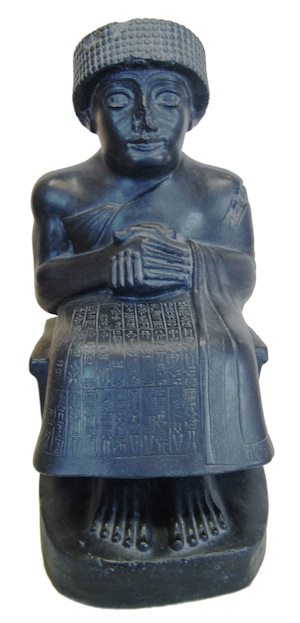Semitec

Gudea of Lagash
Near Eastern (Neo-Sumerian)
replica: from the Louvre, Paris
gift of: the Nasser Family
date of the original: 2120 BC
provenance of the original: "Tablet Mound," Tello (ancient Girsu), Iraq; now in the Louvre, Paris
description: Gudea seated, wearing turban with stylized curls, with hands joined. Plaster replica; diorite original. Height 47 cm, width 23 cm, depth 32 cm.
Gudea was ensi (governor) of the Sumerian city-state of Lagash from 2144 to 2124 BC. He also wielded a consierable amount of influence in other parts of Mesopotamia. In the foundations of a temple to Ningirsu (a war god) he buried a number of clay tablets with cuneiform (see:Black Obelisk) inscriptions. These tablets give accounts of his activities at the temple which communicate his feelings, moods, and dreams.
The original of this statue of Gudea is made of diorite, imported from Egypt. All but one of the twenty extant statues of Gudea were crafted from this stone. His clean-shaven face is calm and smiling; large, fishbone-like eyebrows arch above his almond-shaped eyes. Here he is depicted wearing the royal turban and an Akkadian draped/fringed robe which leaves one muscular arm uncovered. His joined hands are a symbol of piety.
The statue’s proportions are unusual: the absence of a neck makes the head seem too large for a body that looks too small. However, the undeniable quality of the workmanship rules out clumsiness on the part of the sculptor. The figure’s odd proportions are probably a stylistic convention of the period.